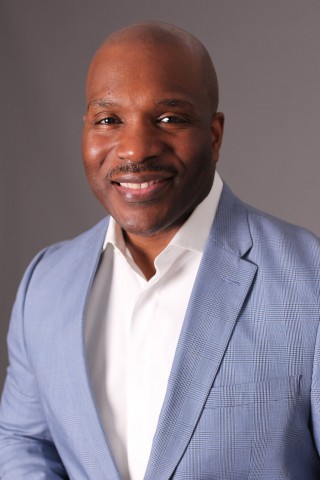
Today, Christmas Day 2022, marks 10 years since Johnnie Davis’ life-changing sudden cardiac arrest.
In the early morning of December 25, 2012, Johnnie Davis was sound asleep at home when around three in the morning, he began shaking and convulsing as he went into sudden cardiac arrest. Noticing that he was not responding, Johnnie’s wife Rachel, a former nursing student, immediately switched on the lights and called 911 before beginning to administer CPR. Johnnie described her incredible resilience later, saying, “She witnessed me take my last breath in her hands. She never stopped doing the chest compressions.”
Four firemen arrived after six or seven minutes and began chest compressions right where Rachel left off. Each did 300 chest compressions, meaning that Johnnie received up to 1,200 chest compressions during this high stakes time. Additionally, he was shocked six times with a defibrillator on the way to the hospital before he began to breathe again, though he was still unconscious. Johnnie later learned he did not have a pulse for 16 minutes.
Johnnie had never expected to suffer from sudden cardiac arrest. Although he had been diagnosed with congestive heart failure and idiopathic cardiomyopathy at the age of 34, Johnnie was a dedicated athlete who played basketball and football in college and exercised regularly. He maintained a healthy lifestyle, so developing a weakened heart was an anomaly.
After this diagnosis, Johnnie was intensely focused on strengthening his heart. He was motivated to improve his ejection fraction—the measurement of how much blood is squeezing through the heart—which at one point was as low as eight percent.[1] He describes this strengthening process as even more difficult than healing from his sudden cardiac arrest. Around this time, doctors recommended that he should receive a pacemaker defibrillator, but there was a problem: insurance wouldn’t cover it due to his age and the fact that he was asymptomatic. Johnnie expressed his frustration, saying, “I had to die first in order for them to pay for it.”
After the sudden cardiac arrest, Johnnie awakened at 11:53 pm on Christmas Day. He returned home after nine days in the hospital and began the process of readjusting back to “normalcy.”
Since there was such an extended period with no oxygen flow to the brain, Johnnie dealt with memory loss after the emergency and described how memories slowly came back to him with time as his brain “rebooted” again. He didn’t remember being discharged from the hospital or even his way home. It was only seeing pictures of himself and his wife on the mantle at home that brought him back to reality.
Readjusting back into life was tough. Johnnie struggled with making sense of what had happened, but more so with the question of why. “I had to figure out what my life was going to be like moving forward, what I was going to be able to do to take care of myself, to take care of my wife, what I was going to be able to do professionally and how I was going to reinvent myself and overcome the physical aspect of not being able to do some of the things that I used to do.”
Johnnie says that one of the worst mistakes was burying his emotions. As years went on, he felt lost and emotionally drained as he tried to make sense of his purpose. He discovered outlets that helped him, such as exercise and writing.
Johnnie found that connecting with others in the cardiac arrest community was fundamental to his healing process. He reached out to people who had similar experiences, sharing stories to gain knowledge and heal as a community. “You have one way that you present yourself to the world, but then behind closed doors, there’s another you: a whole different set of emotions that you’re trying to process. You want to communicate and connect with other people who’ve gone through what you've gone through too.” Johnnie discovered living through gratitude: he was grateful to be alive, to have time, and to help people.
One of his many major accomplishments since the event is writing a book that helps people find courage and hope through struggle[2] and being a co-author on other book projects. He also participates in speaking engagements and seminars, news interviews, and talk shows, and is a board member of the Sudden Cardiac Arrest Foundation, working to educate others and raise awareness. Johnnie’s goal is “Making sure that whatever I’m doing, the focus is to help someone else. The focus is to pay it forward.”
Above all, Johnnie’s message is that sudden cardiac arrest can happen to anyone, no matter their race, gender, or age. He also stresses the necessity of learning CPR to help not only family but also strangers.
Johnnie also shared that part of his healing process involved changing his mindset. He says that he likes to think about it as, “It didn’t happen to you, it happened for you.” Johnnie says that as terrible and traumatic as his sudden cardiac arrest was, it helps to think of it from a new perspective. “Because of what I've experienced, I’m a completely different person now. I have a new courage, a new energy, a new focus, and I have a new direction in terms of where I’m going with my life.” He describes he has developed an emotional muscle that he didn’t realize was weak until going through this situation. Through healing from the hardship of his sudden cardiac arrest, Johnnie has prepared himself to be the person he was destined to become.
By Sawyer Reed
